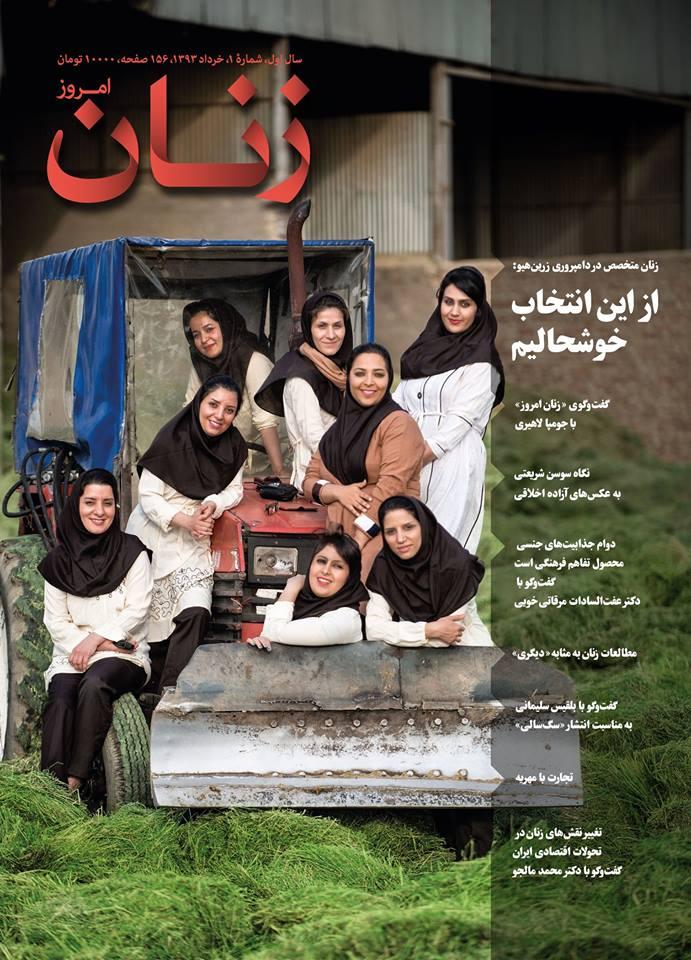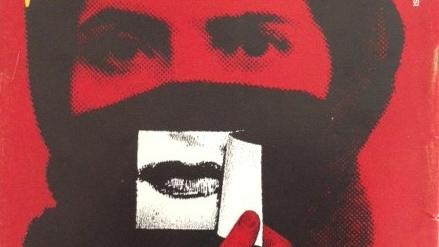After six years of silence, a women’s magazine makes a comeback in Iran
A cover of one of the most-read issues of Zanan (Women) Magazine. The magazine covered controversial topics such as gender issues and women’s rights.
Supporters of women's rights in Iran got some good news last week.
After six years of absence, one of the country's most popular and well-known women's magazines was given permission to publish again.
"Zanan e Emrooz" (Women Today) was shut down in 2008 after the conservative government of then-President Mahmoud Ahmadinejad accused it of "portraying the situation of women in a dark light." Its closing was considered a blow for women's rights.
Zanan was the longest-running and most popular feminist publication in post-revolutionary Iran," says Nina Ansary, an Iranian historian and an expert on Iran's women's movement with an upcoming book called "The Jewels of Allah."
"It was unique and unprecedented that it was able to remain on the radar for 16 years," she adds.
Zanan was different from any other magazine that covered women's issues in Iran. It covered difficult topics, such as discriminatory laws regarding divorce, inheritance and custody. It wrote about sexism and the problems of working women in Iran.
The force behind the magazine was a woman named Shahla Sherkat. Sherkat founded Zanan in 1991.
"She came from a traditional family, got a degree in psychology from the University of Tehran and accidentally stumbled upon the journalistic field," Ansary says.
After the Islamic Revolution in 1979, Sherkat was asked to revive a different women's magazine.
"She was continuously asked, as the editor of that magazine, to depict women as homemakers," Ansary says. "She resigned because she could not go on with this charade."
Then Sherkat decided to create her own magazine — and that's how Zanan was born. Sherkat had to tread carefully to avoid being shut down in such a conservative environment — and managed to do that for 16 years.
In a piece she wrote for Nieman Reports in 2009, she called Zanan her "16-year-old daughter." About the time the magazine was closed, she wrote: "Every day I arrive at work, but a piece of the puzzle of my being has been lost."
Today, Sherkat is back at it again. The first cover of the revived magazine features women veterinarians with the title, "We are happy with our decision."
Having read the first issue, Ansary says the articles aren't as bold as what she used to see in Zanan six years ago.
"Sherkat's stories reflect a strong, yet cautious opening act, which is completely understandable. Given that she was absent for six years, I think this is a beautiful opening act," she says.
Ansary adds that she also sees "a sense of determination" from Sherkat, "something crucial for the women's movement in Iran."
Supporters of women's rights in Iran got some good news last week.
After six years of absence, one of the country's most popular and well-known women's magazines was given permission to publish again.
"Zanan e Emrooz" (Women Today) was shut down in 2008 after the conservative government of then-President Mahmoud Ahmadinejad accused it of "portraying the situation of women in a dark light." Its closing was considered a blow for women's rights.
Zanan was the longest-running and most popular feminist publication in post-revolutionary Iran," says Nina Ansary, an Iranian historian and an expert on Iran's women's movement with an upcoming book called "The Jewels of Allah."
"It was unique and unprecedented that it was able to remain on the radar for 16 years," she adds.
Zanan was different from any other magazine that covered women's issues in Iran. It covered difficult topics, such as discriminatory laws regarding divorce, inheritance and custody. It wrote about sexism and the problems of working women in Iran.
The force behind the magazine was a woman named Shahla Sherkat. Sherkat founded Zanan in 1991.
"She came from a traditional family, got a degree in psychology from the University of Tehran and accidentally stumbled upon the journalistic field," Ansary says.
After the Islamic Revolution in 1979, Sherkat was asked to revive a different women's magazine.
"She was continuously asked, as the editor of that magazine, to depict women as homemakers," Ansary says. "She resigned because she could not go on with this charade."
Then Sherkat decided to create her own magazine — and that's how Zanan was born. Sherkat had to tread carefully to avoid being shut down in such a conservative environment — and managed to do that for 16 years.
In a piece she wrote for Nieman Reports in 2009, she called Zanan her "16-year-old daughter." About the time the magazine was closed, she wrote: "Every day I arrive at work, but a piece of the puzzle of my being has been lost."
Today, Sherkat is back at it again. The first cover of the revived magazine features women veterinarians with the title, "We are happy with our decision."
Having read the first issue, Ansary says the articles aren't as bold as what she used to see in Zanan six years ago.
"Sherkat's stories reflect a strong, yet cautious opening act, which is completely understandable. Given that she was absent for six years, I think this is a beautiful opening act," she says.
Ansary adds that she also sees "a sense of determination" from Sherkat, "something crucial for the women's movement in Iran."
Every day, reporters and producers at The World are hard at work bringing you human-centered news from across the globe. But we can’t do it without you. We need your support to ensure we can continue this work for another year.
Make a gift today, and you’ll help us unlock a matching gift of $67,000!
